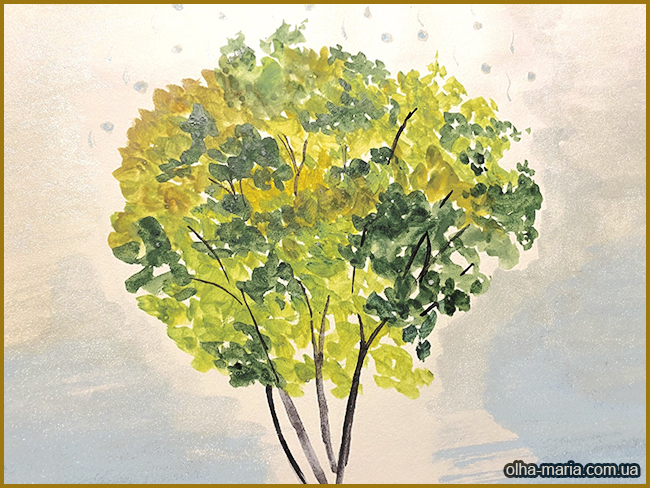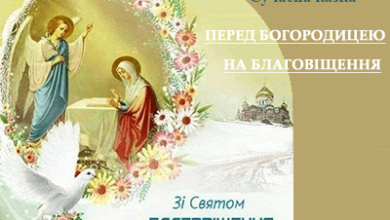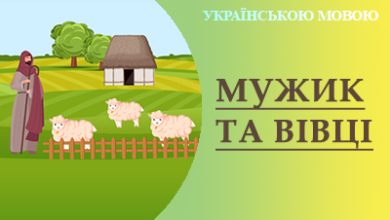The Tree Top as a Conductor of Energies (Wise Instructive Tales)
’The Tree Top as a Conductor of Energies’ – this is one of the many incredible adventures of a girl named Alice. Enjoy reading! And with this link, you can access all the tales and interesting stories of Alice under the title ’Tales of future generations.’
The Tree Top as a Conductor of Energies
*Attention! All rights to the texts and illustrations are protected by copyright. Author of the work: Olga-Maria.
Alice, in the morning, as usual, greeted the Universe by looking through the window of her childhood room. In her thoughts, the girl embraced all the trees around, which grew next to her home. Outside, at that moment, there was absolute silence, no wind at all. In her imagination, Alice touched the treetops and enjoyed the feeling of balance and complete harmony. She lingered in this state for a while, expressing gratitude to all living things. As she was about to step away from the window, she once again addressed the living nature, saying:
– Rest well! Have a good day, everyone!
Upon seeing this, a massive branch on the tree unexpectedly began to sway vigorously, even though there was complete silence outside. The girl looked more closely, listened carefully:
– We don’t want to rest,– came a reference from the trees.
Alice was surprised and continued to listen carefully to nature:
– People (living in the territory of Ukraine – author’s note) are currently severely lacking energy! We want to help!
– Help? How?
– We will radiate and conduct a significant flow of energy through ourselves to compensate for the human deficiency. We will become conduits between Heaven and Earth, – another tree rumbled. Alice continued to hear the trees’ speech.
– Thank you, – the girl said, taking a deep breath, as somber and bitter thoughts briefly passed through her mind.
It turns out that during this period, not just one or two trees expressed their willingness to help people, but all of them. This is the global consciousness, a kind of “agreement” between the plant world.
And what do people do in return for the trees? Look at how many treetops have been cut down! This is especially noticeable in the large cities of Ukraine. People don’t realize that they themselves mutilate the harmony of Being…
– Why don’t you understand that energy is transmitted precisely through the treetops?! And you cut them down for selfish interests, so that wires wouldn’t be obstructed, and so on. Are you serious?! Do these trees really bother you? NO!!! Your petty consumeristic and selfish attitude towards everything living around you is exploitative and destructive. Figure out how to lay electrical wires so that they do NOT DISTURB THE TREES.
And those same trees were not even planted by you (not by this generation); they are much older than you! Have you really not thought about that? Seriously?
Why do you mark trees with yellow paint that could still be useful to people, transmitting great, powerful energy? It’s one thing when a tree has already lived out its age,
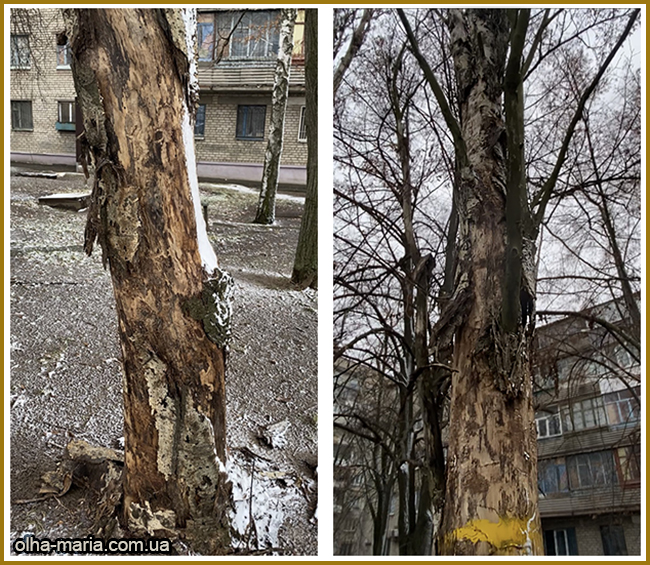
then it is indeed necessary to clear the space, but another matter arises when
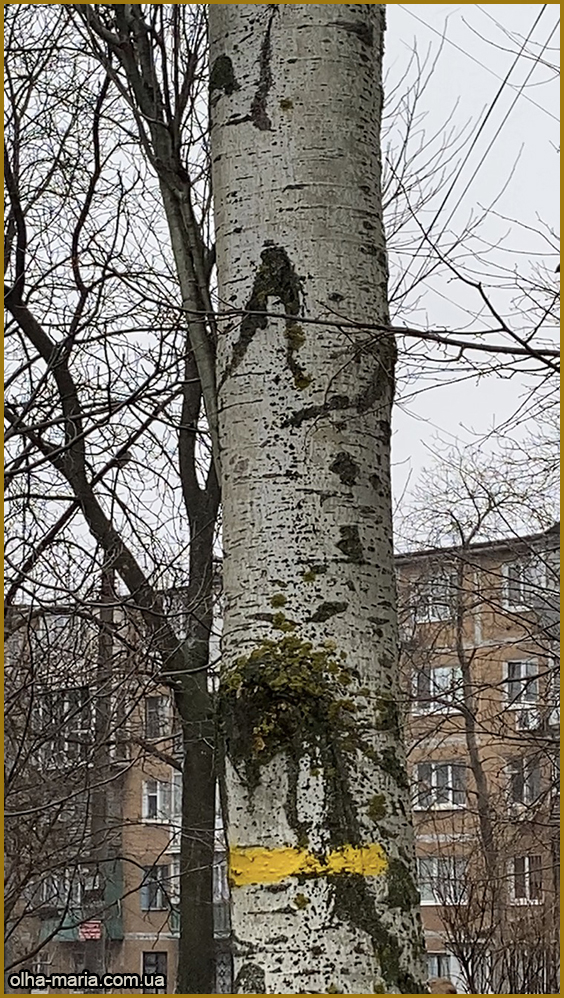
One stroke of yellow paint (by the hand of an unwise, selfish person) serves as a marker for the felling of a living, beautiful tree. How can this be? People, wake up, repent!
Alice felt such pain in her heart, recalling how people treated trees in her hometown. Take, for example, the incident of the mass protest against the felling of trees near the circus. But someone still allowed it… simply granting permission to cut down perfectly healthy trees under which children used to play on their way to the city circus. And what now stands in place of those felled trees? A WASTELAND! A neglected place with bad energy. A wasteland overgrown not with flowers, but with weeds.
The girl’s heart ached with these reflections. Living nature, despite everything, will always help people, just like God. But it depends on us whether we can accept and feel with all our hearts that Divine energy, that universal Love. And for this, perhaps we need to ascend to a higher level of our development – to move from selfish to charitable forms of human existence, where different laws will come into effect.
For example, when a man and a woman get married, they must plant a new tree during the first month of their married life as a symbol of strength, happy formation, and fertility in their family. And when they have a child, they plant another tree to strengthen their baby. This will lead to the creation of many green plantings and parks. Nature itself will help the city or settlement where such laws of unity between humans and nature are in effect. Such thoughts about the future bring warmth to the soul, don’t they?
Alice remembered how she drew a picture in her childhood album when she once watched the trees in spring. That day there was a church service, people walked with baskets, all nicely dressed with smiles on their faces. The church bells could be heard. That day was filled with kindness and love. At that time, Alice, with simple childish naivety, observed nature. She saw a wonderful flow of bluish energy* emanating from the trees. There it was, the HARMONY, in which we need to learn to live.
THIS IS THE HARMONY OF TRUE COEXISTENCE BETWEEN HUMAN AND NATURE!
~THE END~
*Explanation:
In Indian philosophy and yoga, the significance of the top of a tree, especially the crown, is regarded as an important focal point of energy and spirituality. The top of a tree is considered a special place where energy exchange occurs between the tree and the surrounding environment. It is seen as a kind of bridge between Heaven and Earth, connected with several aspects. Let’s consider them:
Center of energy flow:
In yogic teachings, there is the concept of “sushumna nadi” (Sushumna is the most important Nadi (nerve, psychic channel) that runs through the subtle body from the base of the spine to the crown of the head (from Muladhara to Sahasrara). Kundalini rises along the sushumna as a result of yoga practice) – the center of energy flow in the body. The crown of a tree is also perceived as a kind of “sushumna nadi” of the plant world, where prana, the energy of the earth, and the cosmos converge and exchange.
Energy receptor:
From the perspective of yoga and Ayurveda, trees are regarded as receptors and transmitters of energy. Their root system absorbs energy from the Earth, while the crown is the place where this energy actively moves upward.
Symbolism of height:
The treetop is its highest point, reaching towards the sky. In yogic traditions, high places are often associated with proximity to spiritual realities and higher levels of consciousness. Such height may be considered a place where energy merges with the cosmos.
Prana:
In yoga and Ayurvedic teachings, there is a concept of “Prana” (Prana is a term that denotes life energy permeating all aspects of living beings and nature. According to Vedic philosophy, Prana permeates all of nature and every aspect of it, including plants). Trees, like other living beings, are regarded as receivers and transmitters of this life energy. And the crown of a tree is considered a special place where this energy actively concentrates and is transmitted between Heaven and Earth.
In Vedic traditions, the treetop, especially the crown, is perceived as an area carrying significant energetic potential.
The concept of trees as receivers and transmitters of life energy is widespread in various cultures and philosophical traditions. This is particularly evident in Indian philosophy and spiritual teachings such as yoga, Ayurveda, and Vedanta. Here, nature is perceived as a manifestation of Divine energy, and plants, especially trees, play a vital role in this cosmic balance.
In Vedic tradition, trees are considered symbols of life, wisdom, and spirituality. Their height is perceived as a link between Heaven and Earth, and the leaves, roots, and trunk of trees are seen as channels through which life energy (Prana) flows. This is a key concept that defines the interconnectedness of all living beings and nature.
Proper perception and interaction with the energy of trees lead to physical, emotional, and spiritual balance, as well as an increase in consciousness and life energy levels. As we can see, this is an important aspect of human interaction with nature and provides an understanding of internal and external energy flows.
Trees emit energy that can affect our emotional and physical well-being. Therefore, hugging or touching trees can also be seen as an energetic interaction between humans and nature. This provides a sense of calm, harmony, or an increase in life force. Let’s consider some examples:
Tree Bioenergetics
Pine – in Celtic tradition, pine is considered one of the important trees with numerous symbolic and magical aspects. Here are some of them:
Pine is an evergreen plant that does not lose its leaves throughout the year. It is a symbol of eternity, stability, and endurance. Pine is also associated with high spiritual power and resilience in life’s challenges.
In Celtic mythology, pine is sometimes considered a symbol of protection and purity. It can be used to cleanse space from negative energy and protect against evil forces.
Pine, as a tree, is also perceived as a mediator between Heaven and Earth.
Oak – in many cultures, oak is often associated with strength, longevity, and resilience. Hugging an oak tree can contribute to a sense of grounding and inner strength.
Birch – in some traditions, this tree is considered feminine and symbolizes purity, tenderness, and rebirth. Interacting with a birch tree can provide a sense of gentleness and inner harmony.
Linden – according to Celtic tradition, linden was considered a sacred tree associated with the goddess of love and fertility.
In Slavic mythology, the lime tree is a tree under which various rituals were performed, and communities gathered to address important matters.
In some European cultures, the lime tree is considered a symbol of love and devotion, as well as a symbol of tenderness and beauty.
Ash – in Scandinavian mythology, ash is associated with strong and enduring qualities.
In some traditions, ash leaves can be used for protection against evil forces.
Maple – symbolizes prosperity and abundance.
Birch – symbolizes new life and rebirth.
These are just a few examples, but it is important to understand that interaction with nature has a positive impact on people. There are several philosophical approaches to tree symbolism. For example, in Celtic mythology, trees had their own symbolic meanings and were considered sacred. Interacting with trees meant connecting with the spirits of nature and feeling one’s place in the cosmic order.
The view of trees and other living beings as receivers and transmitters of life energy is associated with specific aspects of philosophical traditions in different cultures. This can be especially found in the teachings of various Indian philosophical systems. Here are a few aspects and cultures where these views may be noted:
According to Indian philosophy, trees are seen as receivers of energy, and contact with trees is considered a means of enhancing energetic harmony and consciousness. These concepts stem from a deep understanding of nature and the interaction of all living beings. For example, in yoga and other Indian philosophical traditions, the concept of the tree’s crown, especially the crown, as an energy transmitter, reflects in the broader context of the interaction between nature, humans, and the cosmos.
In yoga and Ayurveda, there are concepts of chakras (energy centers in the human body) and Nadis (energy channels). From the perspective of Ayurveda, trees are considered important channels that carry these energies and help maintain balance in the internal and external environment. They can influence the psycho-emotional state, physical health, and spiritual balance.
In Ayurveda, there is a principle based on three primary energies or Doshas – Vata, Pitta, and Kapha, which regulate various functions of the mind and body and determine the constitution of each individual. Trees, interacting with different elements, can influence these Doshas and help restore balance in the body.
There is a philosophy called Vedanta. (Vedanta studies the nature of reality and the relationship between humans and the cosmos). Interestingly, Vedanta considers the tops of trees as symbols of interaction with higher reality. The leaves perceive light energy and information, which they then transmit to the rest of the trees, and this, in turn, can influence the Earth and the surrounding environment.
Vedanta teaches about the unity of all living and non-living things with the Absolute or Brahman. Trees are considered parts of this invisible whole, and their components, such as leaves and branches, are perceived as channels for carrying life energy.
In Indian philosophy (Hinduism, Buddhism, Jainism), nature is considered a manifestation of Atman (Atman – soul, individuality, or self, inner spirit) and Brahman (Brahman – absolute spirit, universal soul, the primary foundation of all things and phenomena. Analogous to the concept of absolute God or absolute spirit. Immutable, boundless, omnipresent, and transcendent reality, existence. It forms the basis of material, energy, time, space, and all entities in the Universe). Living beings, including trees, are regarded as manifestations of this unified reality and therefore seen as receivers and transmitters of life energy.
In Taoist philosophy (Taoism, also known as Daoism – one of the main directions of ancient Chinese philosophy, according to which nature and human life are subject to a universal law – Dao, which exists beyond human consciousness. Emerged in the 2nd century BCE), nature and cosmic energy are seen as the interaction of two principles – Yin and Yang. Trees and nature are considered manifestations of this inner harmony and energetic interaction.
In various cultures of shamanism (Shamanism – the belief that a person can be a spiritual intermediary between the world of the living and the world of spirits. The roots of shamanism go back to a very ancient past – over forty thousand years ago. Shamanism emerged long before Christianity, Islam, Buddhism, and even before pagan polytheism or any other religion), trees are often perceived as means of communication between different worlds, including the physical and the spiritual.
It is important to note that views on trees and nature can vary across different cultures, philosophical systems, and beliefs. However, in many of them, trees are considered symbols of life, growth, harmony, and energetic interaction with the surrounding world.
Overall, in various philosophical traditions, approaches to understanding the tops of trees as energy transmitters often incorporate ideas about energy, prana, spirituality, and the individual’s connection with nature and the cosmos. These views are seen as expressions of a deep connection between living beings and the energy of the entire universe.
These concepts reflect a worldview where all aspects of nature, including trees, are perceived as parts of a grand cosmic dance of energy and life, indicating that all living things are not just material forms but also manifestations of a higher spiritual reality or cosmic energy.
The whole world operates as a single organism. Preserving harmony with nature and utilizing its resources are key aspects of maintaining its health.
Remember that trees and nature are not just material forms but also manifestations of higher spiritual reality and cosmic energy!
Thank you for being with us! Share your thoughts on what you’ve read in the comments.
Find a similar philosophical article about trees by following this link.
Don’t forget to subscribe to our channels:
